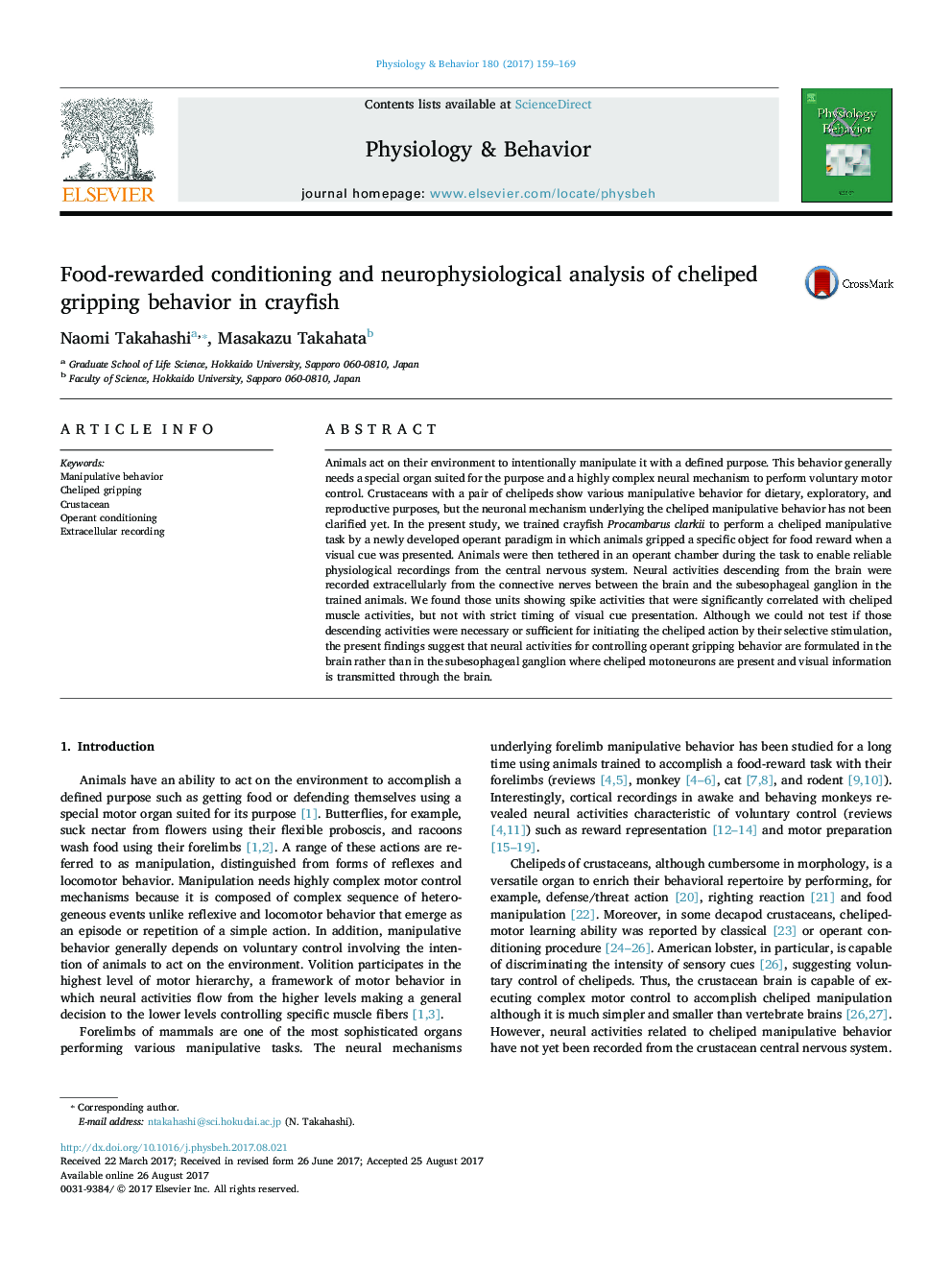| کد مقاله | کد نشریه | سال انتشار | مقاله انگلیسی | نسخه تمام متن |
|---|---|---|---|---|
| 5593610 | 1571139 | 2017 | 11 صفحه PDF | دانلود رایگان |
عنوان انگلیسی مقاله ISI
Food-rewarded conditioning and neurophysiological analysis of cheliped gripping behavior in crayfish
دانلود مقاله + سفارش ترجمه
دانلود مقاله ISI انگلیسی
رایگان برای ایرانیان
کلمات کلیدی
موضوعات مرتبط
علوم زیستی و بیوفناوری
بیوشیمی، ژنتیک و زیست شناسی مولکولی
فیزیولوژی
پیش نمایش صفحه اول مقاله

چکیده انگلیسی
Animals act on their environment to intentionally manipulate it with a defined purpose. This behavior generally needs a special organ suited for the purpose and a highly complex neural mechanism to perform voluntary motor control. Crustaceans with a pair of chelipeds show various manipulative behavior for dietary, exploratory, and reproductive purposes, but the neuronal mechanism underlying the cheliped manipulative behavior has not been clarified yet. In the present study, we trained crayfish Procambarus clarkii to perform a cheliped manipulative task by a newly developed operant paradigm in which animals gripped a specific object for food reward when a visual cue was presented. Animals were then tethered in an operant chamber during the task to enable reliable physiological recordings from the central nervous system. Neural activities descending from the brain were recorded extracellularly from the connective nerves between the brain and the subesophageal ganglion in the trained animals. We found those units showing spike activities that were significantly correlated with cheliped muscle activities, but not with strict timing of visual cue presentation. Although we could not test if those descending activities were necessary or sufficient for initiating the cheliped action by their selective stimulation, the present findings suggest that neural activities for controlling operant gripping behavior are formulated in the brain rather than in the subesophageal ganglion where cheliped motoneurons are present and visual information is transmitted through the brain.
ناشر
Database: Elsevier - ScienceDirect (ساینس دایرکت)
Journal: Physiology & Behavior - Volume 180, 15 October 2017, Pages 159-169
Journal: Physiology & Behavior - Volume 180, 15 October 2017, Pages 159-169
نویسندگان
Naomi Takahashi, Masakazu Takahata,